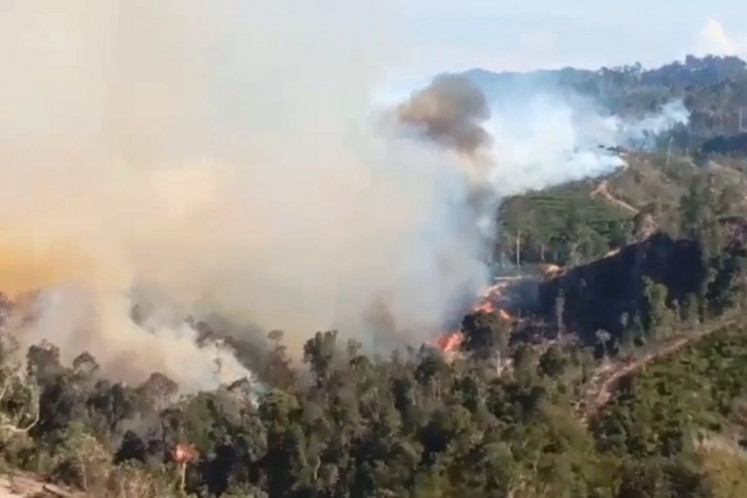Popular Reads
Top Results
Can't find what you're looking for?
View all search resultsPopular Reads
Top Results
Can't find what you're looking for?
View all search resultsGovt plans flow meters at oil, gas wells for accurate output data
After years of criticism on the absence of accurate oil and gas production data in the field, the government has prepared a measure to force oil and gas contractors to install flow meters at their wells
Change text size
Gift Premium Articles
to Anyone
A
fter years of criticism on the absence of accurate oil and gas production data in the field, the government has prepared a measure to force oil and gas contractors to install flow meters at their wells.
Energy and Mineral Resources Ministry’s oil and gas director general IGN Wiratmaja Puja said the government would stipulate the installation of flow meters through a ministerial regulation in a bid to increase the accuracy of measuring daily crude production in the country.
The impending regulation comes as Indonesia’s oil and gas production decreases at an average rate of 20 percent per year, as most fields have already shown a natural decline.
The Upstream Oil and Gas Regulatory Special Task Force (SKKMigas) has thus far relied on daily oil and gas production reports submitted by contractors.
There are no regulations making it compulsory to install flow meters, which measure the real flow rate or the quantity of oil and gas.
“The objective of the flow meter installation is to monitor production, and the data will be delivered to SKKMigas on a real-time basis, which will also be transferred to the Energy and Mineral Resource Ministry,” Wiratmaja said.
He explained that currently flow meters were only installed at oil and gas points of delivery to measure ready-to-sell production, known as lifting.
Although the variance between oil lifting and total production is limited, at only around 0.25 to 1.6 percent, it provides greater accuracy for monitoring purposes.
Declining to disclose the exact date of the ministerial regulation issuance, Wiratmaja said the flow meters would be procured using state funds. The installation will be conducted by SKKMigas.
“The flow meters will be the state’s property while SKKMigas will be tasked with installing and operating the equipment,” he said.
According to data from SKKMigas, national crude oil production reached 817,900 barrels of oil per day (bopd) and gas production hit 7.9 trillion cubic feet (tcf) a day in the first half of the year.
Meanwhile, oil and gas lifting was at 1.996 million barrels of oil equivalent a day (boepd), slightly exceeding SKKMigas’ target set in this year’s work plan and budget of 1.94 million boepd.
The country’s oil lifting has largely been supported by fields including Chevron’s Rokan field and ExxonMobil’s Cepu field, with lifting rates of 256,400 and 154,700 bopd, respectively.
Meanwhile, Total E&P’s Mahakam field and BP Tangguh’s Berau, Muturi and Wiriagar fields were the main contributors to gas lifting in the first half of 2016, with 280,900 and 167,000 boepd, respectively.
Although oil lifting and production have largely exceeded this year’s targets, the figures are a far cry from Indonesia’s heyday in the 1970s when oil production reached a peak of 1.7 million bopd.
Ageing wells and a lack of new oil and gas reserve discoveries have been blamed for the decline.
The government has set targets of 815,000 bopd of oil and 1.15 million boepd of gas in next year’s draft state budget.
The Indonesian Petroleum Association (IPA) expressed its commitment to supporting the plan, especially as several fields have had flow meters installed and are monitored frequently.
IPA executive director Marjolijn Wajong explained that the existing flow meters were state property, but were operated by contractors.
“There are several flow meters which have been certified by the oil and gas directorate general,” she said.










